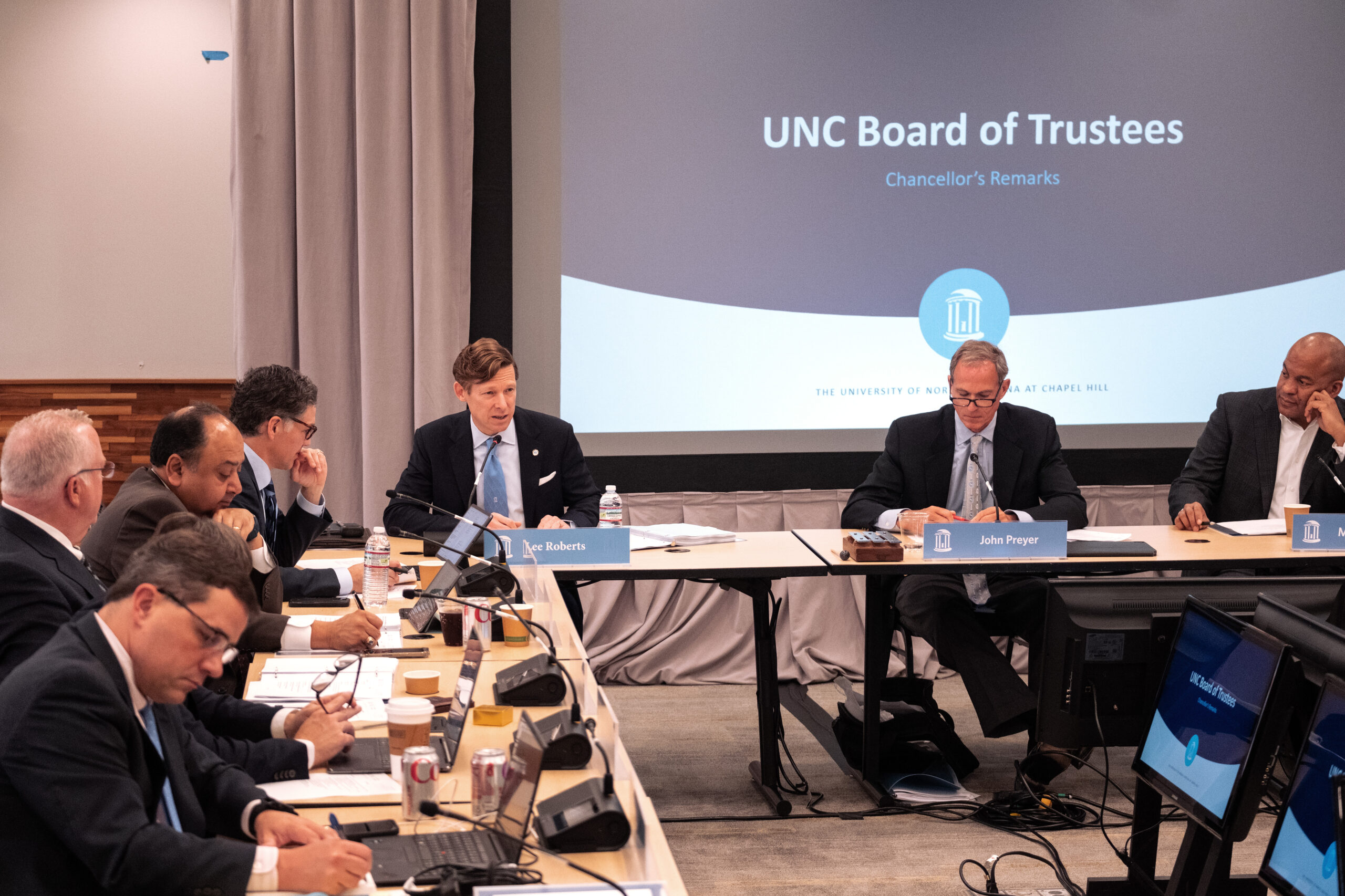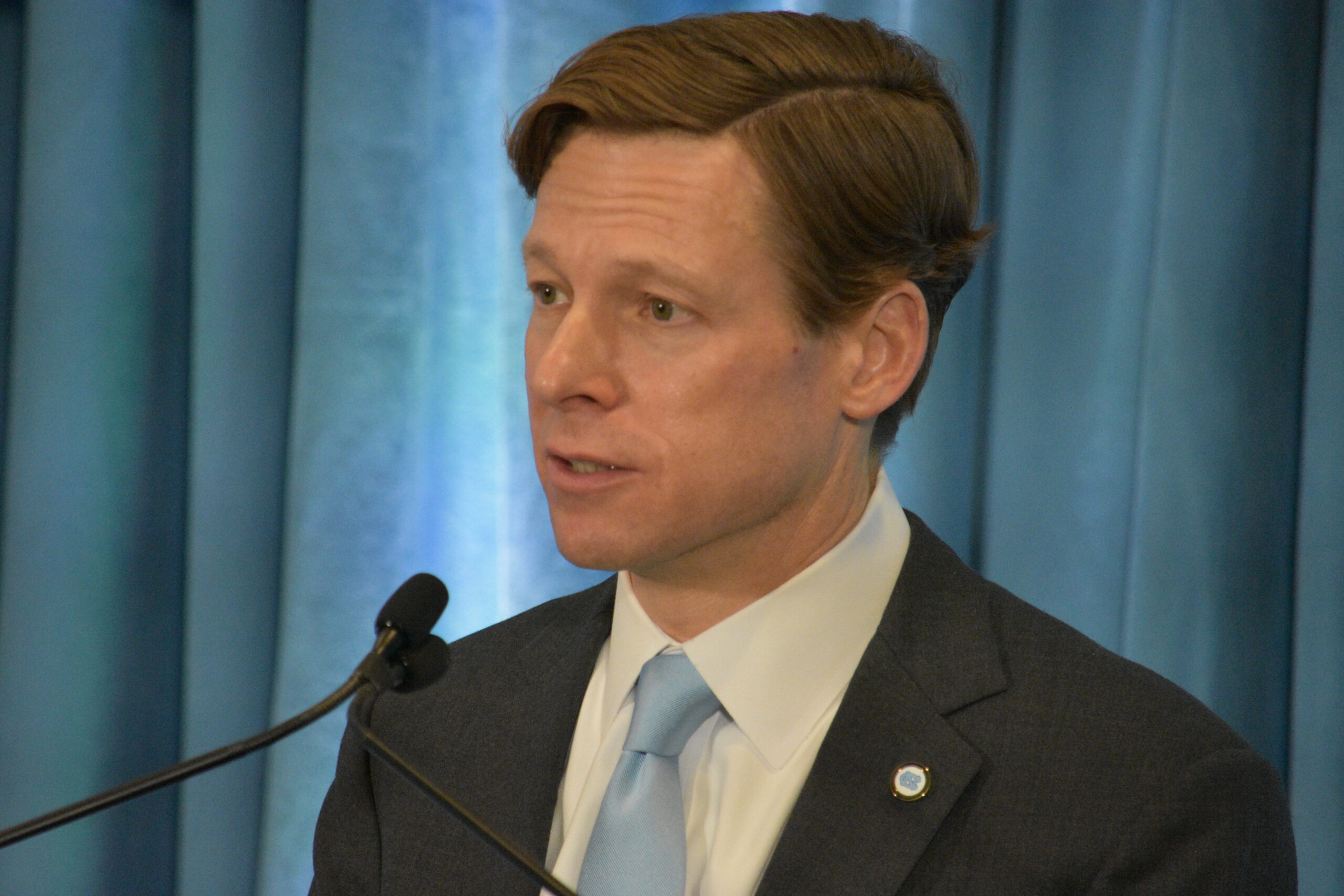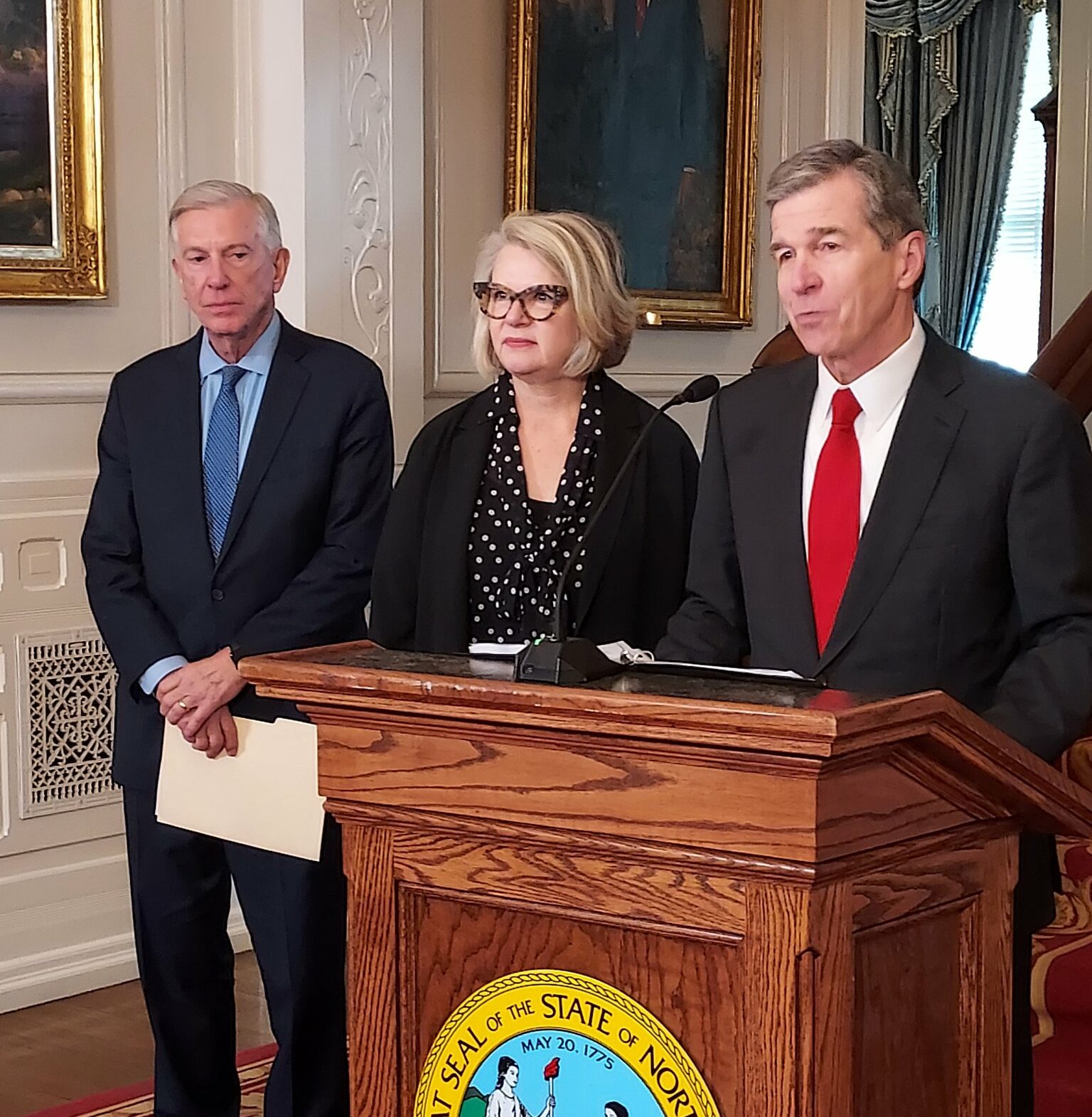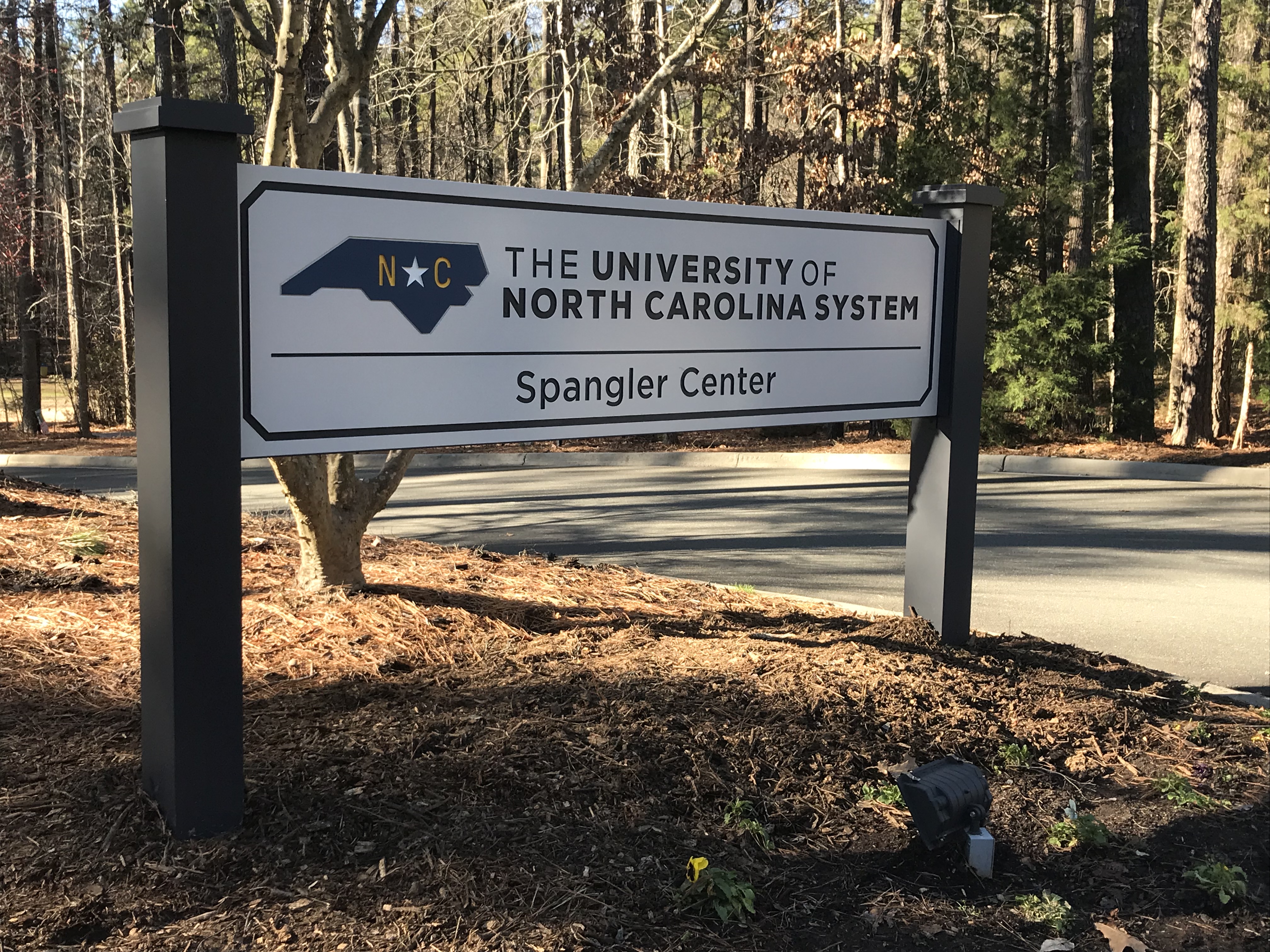The UNC Board of Governors has distributed funding with the same formula for over 20 years. Until now.
In light of the BOG’s five-year strategic plan “Higher Expectations” for access, student success, affordability and efficacy, the board is working on a new plan for fund distribution too.
“This is a great time to go back now that we have that strategic plan in place, connect it with the way we provide the dollars to do that,” said Scott Lampe, chair of the newly-established UNC Funding Model Task Force. “And that’s our plan—we don’t have a new plan yet, just so we’re clear.”
The task force will study the current formula and research the ways in which it can be improved.
Lampe said the funding model is important because it determines how to take the $2 billion support from taxpayers and distribute it to all campuses. But that support needs to change as the universities do.
“The goal of the task force is to create a new funding model that matches the strategic plan and takes into account some of the changes in the world from the last 25 years,” he said.
The way the funding model works today, is that it accounts for each student and the number of credit hours that student is taking, and then weighs funding based on the degree that student is working toward.
Lampe said universities with lab-based research and STEM programs are currently receiving the most money because of the cost of the necessary educational equipment.
But he said the real issues lie with some grandfathered-in costs that were already there. The task force will start from scratch with the funding model as a whole.
“What we have today for the incremental students and the additional students will be at least a portion, I think, of what we do going forward,” Lampe said. “But we’ve got to tie that in with all the strategic plans we have across the whole university system.”
According to a press release from the BOG, the task force will take place over the course of a year, with its first meeting set for June. In that meeting, task force members will discuss the timeline and work plan and examine strengths and weaknesses of the existing funding formula.
Related Stories
‹

UNC System Chooses Kenan-Flagler Alum, Former Domino's CEO as Latest UNC-Chapel Hill TrusteeRitch Allison — who was formally selected Thursday by the UNC System — will fill the Board of Trustees seat left vacant by Dave Boliek.

Here's What UNC President Peter Hans Said About Picking Lee Roberts to Lead UNC-Chapel HillThe UNC Board of Governors approved Lee Roberts to take off the ‘interim’ tag to his role as chancellor of UNC-Chapel Hill on Friday. The vote by the board came after UNC System President Peter Hans nominated Roberts and gave an extended speech on the selection process, Roberts’ approach to leadership, and his own vision […]

Board of Governors Set Friday Meeting to Elect New UNC ChancellorThe search for the next permanent UNC chancellor is coming to a close, as the UNC Board of Governors will hold a special meeting on Friday.

'Ready to Roll Up My Sleeves': UNC Interim Chancellor Shares Early Impressions On the JobUNC Interim Chancellor Lee Roberts spoke with the media on Thursday for the first time since being named to the role in December.

UNC Housekeepers Rally in Chapel Hill, Raleigh for Pay RaisesSeveral housekeepers, students and community members gathered for rallies on Wednesday to call for action from the UNC Board of Governors.

Court OKs Dismissing UNC Student Suit Seeking Virus RefundsWritten by THE ASSOCIATED PRESS A trial judge was correct to dismiss a lawsuit filed by then-University of North Carolina students seeking tuition, housing and fee refunds when in-person instruction was canceled during the 2020 spring semester as the coronavirus pandemic began, the state Court of Appeals ruled Tuesday. Several students at UNC system campuses and […]

NC Governor Wants Changes to How UNC Governing Boards ChosenWritten by GARY D. ROBERTSON Gov. Roy Cooper on Tuesday announced a new commission tasked with making recommendations on changing how the boards guiding the University of North Carolina system and its 17 member schools are chosen, bidding to broaden their membership by political leanings, race and gender. The Democratic governor essentially blamed the Republican-controlled […]

Court: UNC Students Can Seek Covid Semester ReimbursementWritten by THE ASSOCIATED PRESS Students at the University of North Carolina can continue their lawsuit seeking monetary damages for fees they paid before in-person fall 2020 classes were canceled due to COVID-19, a state appeals court ruled. A three-judge panel of the Court of Appeals decided on Tuesday that a trial judge correctly last year refused […]

One on One: Can’t Stop UNC’s Move to RaleighEditor’s Note: The UNC System has shared with Chapelboro.com that UNC President Peter Hans does live in the university president’s home. The column does not yet reflect that fact. Too late. It has already been done. The Spangler building that served as headquarters of the UNC System is dark and empty for the first time […]

National Group ‘Resoundingly Condemns’ UNC SystemThe American Association of University Professors (AAUP) governing council voted unanimously to condemn the UNC System on Thursday.
›











